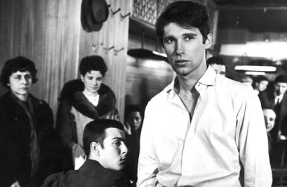Vagabond

At the beginning of Agnès Varda’s Sans toit ni loi (1985), Sandrine Bonnaire’s vagabond Mona lies dead in a ditch, her skin caked with mud and discoloured by the cold of a harsh French winter. This image of frigid fixity looms over the film, which then skips back to tell a fractured tale of the weeks preceding Mona’s demise. It might also be said to haunt the career of Patricia Mazuy, who got her start as the film’s co-editor and, a few years later, cast Bonnaire in her directorial debut, Peaux de vaches (1989). While Bonnaire’s presence makes the echo with Varda’s film somewhat unsurprising, that unforgettable glimpse of death lingers throughout the films of Mazuy that followed—even to her latest, Paul Sanchez est revenu! (2018), which placed fifth on Cahiers du Cinéma’s annual top ten list, and was subsequently presented in a career retrospective at New York’s Film at Lincoln Center late last year. But crucially for the young director, who was in her early twenties when she first met Varda, this scene didn’t serve as an aesthetic template so much as a kind of key memory, one that she carried with her in the years that followed but employed to her own unique ends. As in a Western—the foremost genre antecedent of Mazuy’s cinema—that fatal beginning became a site of departure, a point of origin from which her peripatetic career would chart its own course.
The reasons for this overall trajectory have much to do with the explicitly outsider perspective of . Shot in the Languedoc-Roussillon wine region of southern France, the film was partially inspired by a drifter Varda had met during her travels, a fact acknowledged by the film’s opening voiceover. And even Bonnaire’s Mona, though she gave up her original name and a from the land, was not an option: she’s spoken of how her upbringing cultivated an ambivalence to the French countryside, as well as to cinematic representations of rural life. It thus doesn’t seem incidental that, as if reclaiming this territory, her films span the breadth of the country, from the farmlands of northern France to the rocky Var region of the south and the equestrian expanses of Lower Normandy. Like her more well-known contemporary Alain Guiraudie, Mazuy has a particular understanding of provincial ennui, and the itchy impulse to escape that it inspires. Bound to the earth, her characters long to sever their roots and remake themselves (and the world around them) anew, though their cruel fate is that the time for such action—the time of the Western—is behind them.
You’re reading a preview, subscribe to read more.
Start your free 30 days





